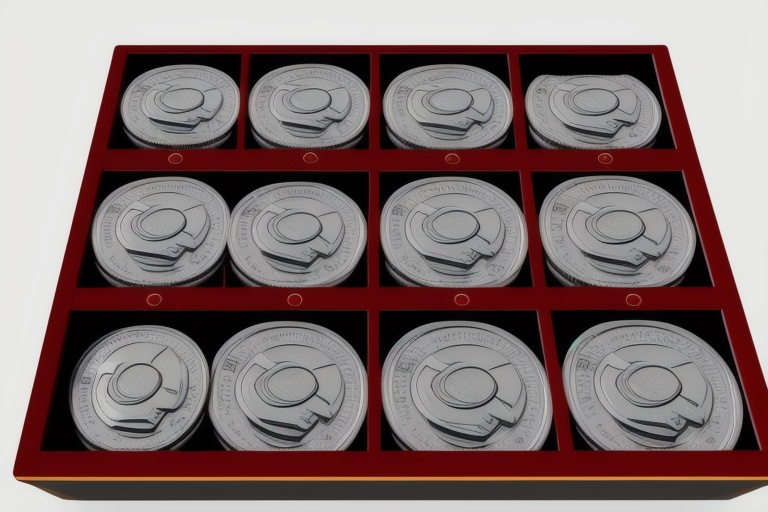Coin collecting, also known as numismatics, is an engaging and enriching hobby that encompasses the systematic acquisition and study of coins, tokens, paper money, and related items. With origins going back to ancient civilizations, this pastime not only connects us with history but also stimulates our appreciation for artwork and the economy of bygone eras.
Coin collecting, also known as numismatics, is an engaging and enriching hobby that encompasses the systematic acquisition and study of coins, tokens, paper money, and related items. With origins going back to ancient civilizations, this pastime not only connects us with history but also stimulates our appreciation for artwork and the economy of bygone eras.
The Ancient Roots of Numismatics
Contrary to popular belief, coin collecting did not begin during the Italian Renaissance; its roots can be traced back much further. Historical texts from Greek and Roman times shed light on early numismatists. For example, the Roman historian Suetonius chronicled Emperor Augustus's affinity for old and unusual coins, which he cherished and often presented as gifts. These early accounts show that coins have long been valued for their historical importance and artistic merit.
Coins as Art and Wealth
The allure of coins as collectible items is evident from archaeological evidence, such as the treasure troves discovered across Europe. In Vidy, Switzerland, a hoard of distinct gold coins from the Roman period was found, each coin unique—suggesting deliberate collection and preservation. Coins from the 4th and 3rd centuries BC were recognized as portable works of art and were frequently incorporated into jewelry and other decorative crafts, reflecting their dual function as both currency and art.
Royal figures and the aristocracy were among the earliest collectors, with coin collecting becoming known as "the hobby of kings." Monarchs and nobles often had coins minted to commemorate significant occurrences or to display their own prominence, and these coins became highly coveted by like-minded collectors.
From Hobby to Science: The Evolution of Numismatics
Throughout the 19th century, numismatics evolved into a more scholarly pursuit as intellectuals and collectors started systematizing and categorizing coins, uncovering their historical contexts. The establishment of numismatic societies and the publication of specialized journals further popularized the hobby and nurtured its growth.
Nowadays, advancements in technology have democratized coin collecting, making it more accessible. Resources for research, communication with fellow enthusiasts, and online transactions have revolutionized how collectors build and manage their portfolios.
Valuing the Past: The Worth of Coins
The valuation of coins is a multifaceted aspect of numismatics that intrigues many collectors. Factors such as rarity, condition, historical significance, and demand play pivotal roles in determining a coin's worth. This pursuit of valuation often leads to the discovery of remarkable and valuable pieces, adding to the excitement of the hobby.
The Enigmatic Allure of Ancient Coins
Ancient coins are particularly valued by collectors for their historical insights and intricate designs illustrating rulers, mythological figures, and other emblematic motifs. For instance, a 4th-century Roman coin featuring Constantine the Great not only portrays the emperor's image but also bears Arabic inscriptions revealing his lineage. The authenticity and detail of these coins make them prized collectibles and historical artifacts.
Such relics highlight how past societies revered and collected coins. The Roman Empire produced a series of coins honoring deified emperors with designs that replicated coins minted centuries earlier. The employment of ancient motifs by later civilizations, like those under Charlemagne's rule, attests to the enduring influence of coin collections on cultural legacy and artistic expression.
Numismatics in the Renaissance and Beyond
During the Renaissance, the demand for antique coins among European aristocrats surged. The period engaged artists in creating replicas and medals, illustrating the high regard for coin collecting. This era also saw the unfortunate emergence of forgeries, as enthusiasts scoured lands rich with historical artifacts to expand their collections. Nevertheless, the transition from the Renaissance to the Enlightenment signified a profound shift towards rigorous scholarly research and the beginnings of coin collecting as a scientific discipline.
The 17th century saw numismatics solidify as an academic field, with comprehensive cataloging of collections and rigorous study. Institutions began endorsing scholastic research, cementing numismatics' status as a respected study. This trend continued into the 18th century, with the establishment of public collections that further disseminated numismatic knowledge to a broader audience, encompassing middle-class citizens and enthusiasts drawn to the cultural sophistication of coin collecting.
Conclusion: The Unceasing Fascination of Coin Collecting
In contemporary times, ancient coins offer collectors the chance to own genuine pieces of history, making the past palpably real. These coins are accessible historical artifacts that invite collectors to forge personal connections with ancient civilizations. The stories each coin tells are as diverse as the collectors who seek them, from those with intricate ancient designs to medieval coins modified for changing sociopolitical climates.
The journey of coin collecting is a testament to the enduring passion it instills in those who partake in it. It provides intellectual stimulation, artistic enjoyment, and the thrill of the chase for both novice and veteran collectors alike. With modern tools at their disposal, there has never been a better time to join the ranks of numismatists and explore the rich tapestry of history that each coin holds.
In essence, coin collecting is a bridge between the past and the present, an activity that allows us to appreciate not just the tangible aspect of coins but also their intrinsic links to history, culture, and art. As we delve into the realm of numismatics, we immerse ourselves in a world of endless discovery and fascination—a world where every coin has a story to tell.
Information for this article was gathered from the following source.




